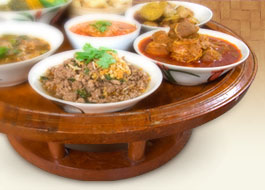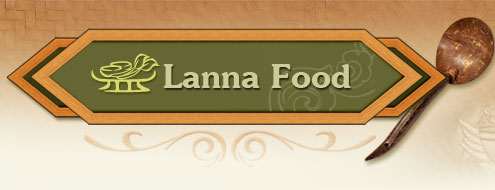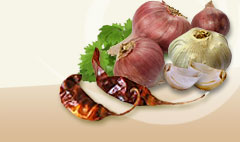Straw mushrooms |
|
|
 | Volvariella Volvacea Fr. |
|
| |
 | Agrocaceae |
|
| |
 | Straw Mushroom |
|
| |
 | Het bua (Kanchana Diwiset, et al., 2005, p. 245 ) |
|
| |
 | Tropical mushroom, grows on many media such as compost, humus soil and old straw at 40O C. for the spore to germinate. The young ones look like a small white ball with a grayish color at in the middle, 1-3 cm. in diameter. Cap hat-shaped, stalk 4-5cm. long, 1 cm. cylindrical, smooth, umbrella-like with a cup-like volva at the base; whitish brown. (Kanchana Diwiset, et al., 2005, p. 245 ) |
|
| |
 |

No information on nutrition.
As for food Tender straw mushrooms are used in many different dishes including tom, kaeng and yam. Lanna people use it to make a spicy salad called yam het fang with lap chili paste the same as making yam chin khai and yam kop. (Kanchana Diwiset, et al., 2005, p. 245 ) |

A cool sweet taste, used as a tonic, for healing bruises of the inner organs or liver damage. (Kanchana Diwiset, et al., 2005, p. 245 ) |
|
| |
 | All year round |
|
| |
 |
Kanchana Diwiset, et al., comp. (2005). Phak Phuen Ban Phak Nuea. Phennapha Sapcharoen, ed. (2nd ed.). Bangkok: Center for the Development of Traditional Thai Medicine. |
|
| |
|
|




